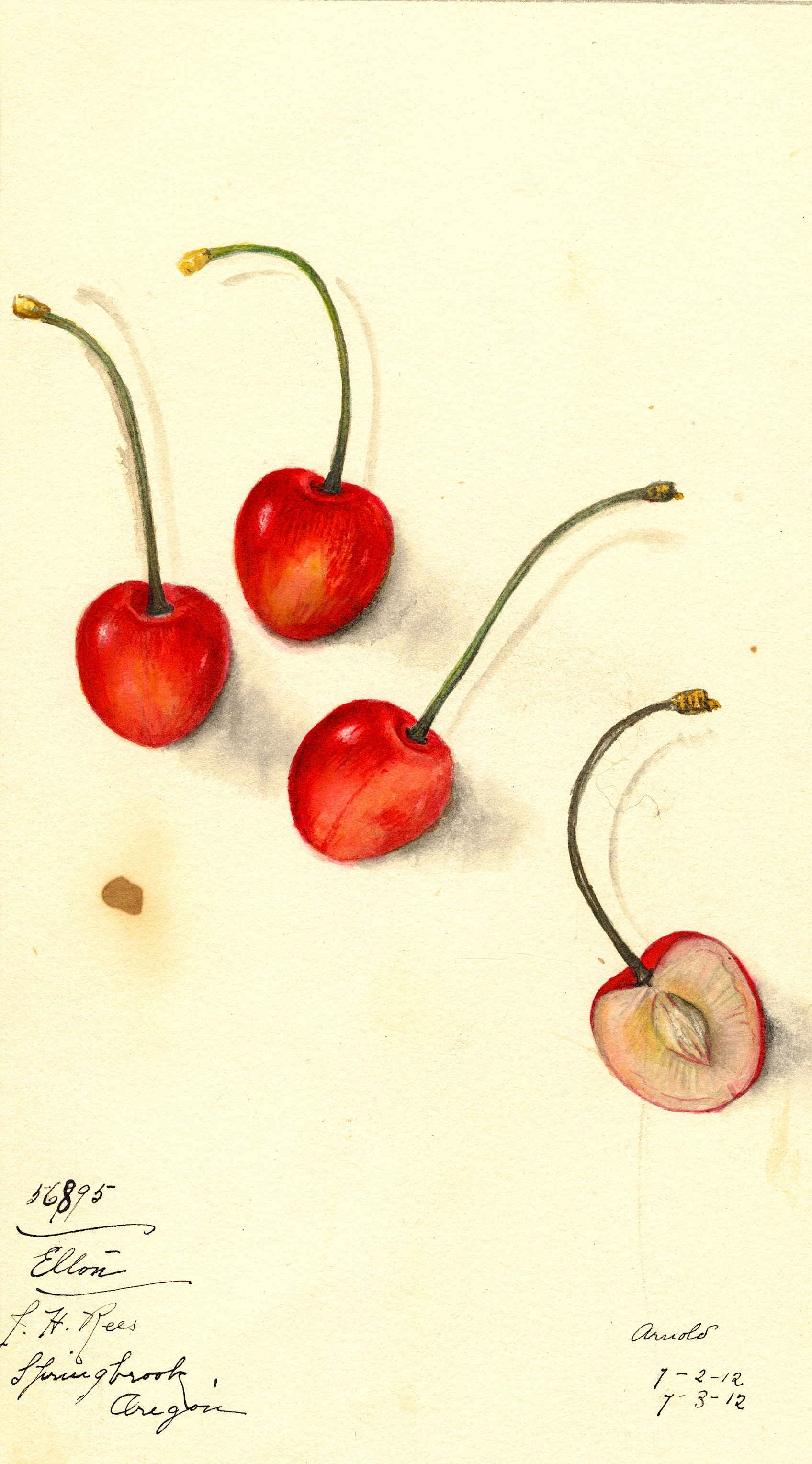 ELTON
ELTON
An English sweet cherry created in 1806 by Thomas Knight by crossing the Bigarreau with the White-Heart, that rapidly became known for its delicious fruit and vigorous tree. It was communicated to several growers in America in the early 1820s, and thereafter enjoyed notice, though not on the scale of cultivation practiced in Great Britain. The Kentucky Nursery in Louisville provides a succinct description in its 1897 catalogue: “Large, pointed; pale yellow, nearly covered with light red; half tender, juicy, rich and delicious. Tree very vigorous, spreading and irregular. End of June” (p. 210). The fruit tended to grow singly rather than in pairs, had a rather waxy skin, and Notes. It is no longer archived in U. S. pomological collections. A Black Elton Cherry survives and is available from English nurseries. “Some Notice of T. A. Knight,” Massachusetts Agricultural Repository and Journal 7 (1823), 340. John Lindley, Pomologia Britannica 2 (1841), p. 92.
Always a rare cherry in the United States, it was grown most extensively on the West Coast, but had a following in the upper South, particularly Virginia and Kentucky. The 1890s marked the end of whatever popularity it enjoyed in the United States. It proved not so productive as other varieties, a fault that eclipsed its rich taste and the visual beauty of its fruit. It ripened about the same time as the May Duke, so had for a period the advantage of being one of the earlier varieties to market.
Nurseries that offered the Elton sweet cherry prior to 1920:
Cedar Cover, Salem, NC 1893. Downer's Forest Nursery, Fairview, KY 1870. Fruitlands, Augusta, GA 1885. Hopewell Nursery, Fredericksburg, VA 1859. Kentucky Nursery, Louisville, KY 1897. Old Dominion Nursery, Richmond, VA 1902. Silver Leaf Nursery, Boone's Path, VA 1888.
Image: U.S. Department of Agriculture Pomological Watercolor Collection. Rare and Special Collections, National Agricultural Library, Beltsville, MD 20705, Mary Arnold 1912.
David S. Shields